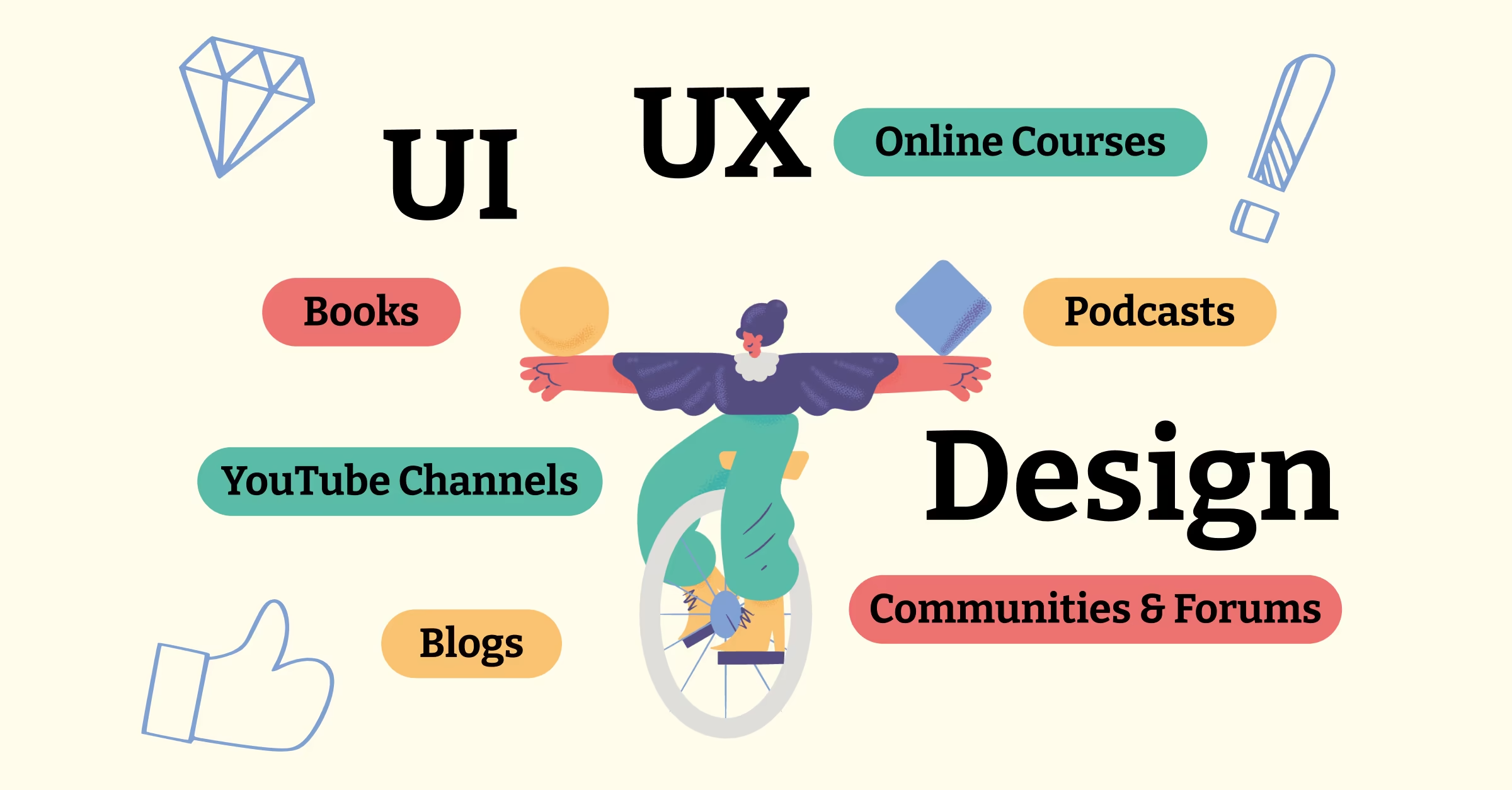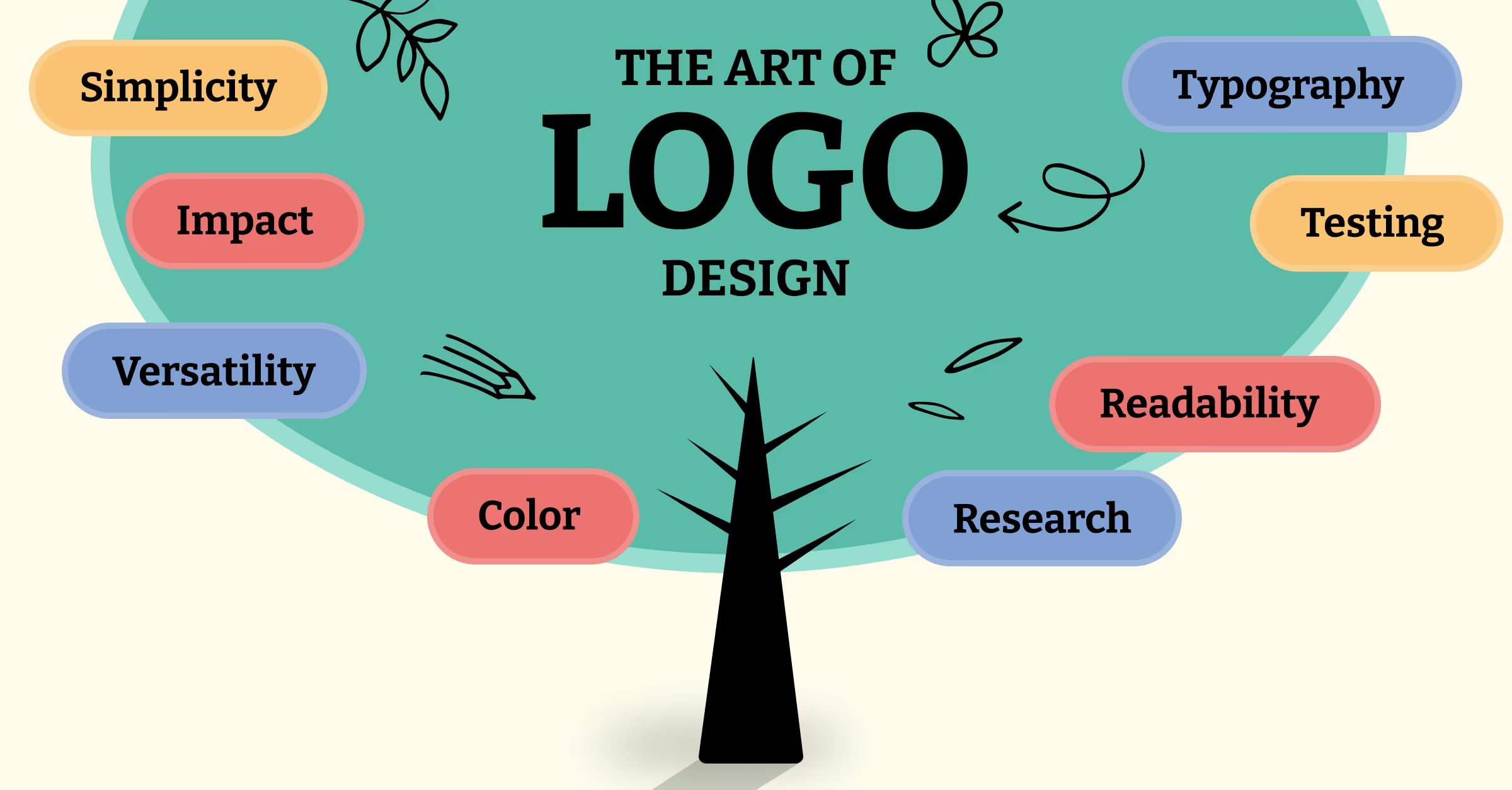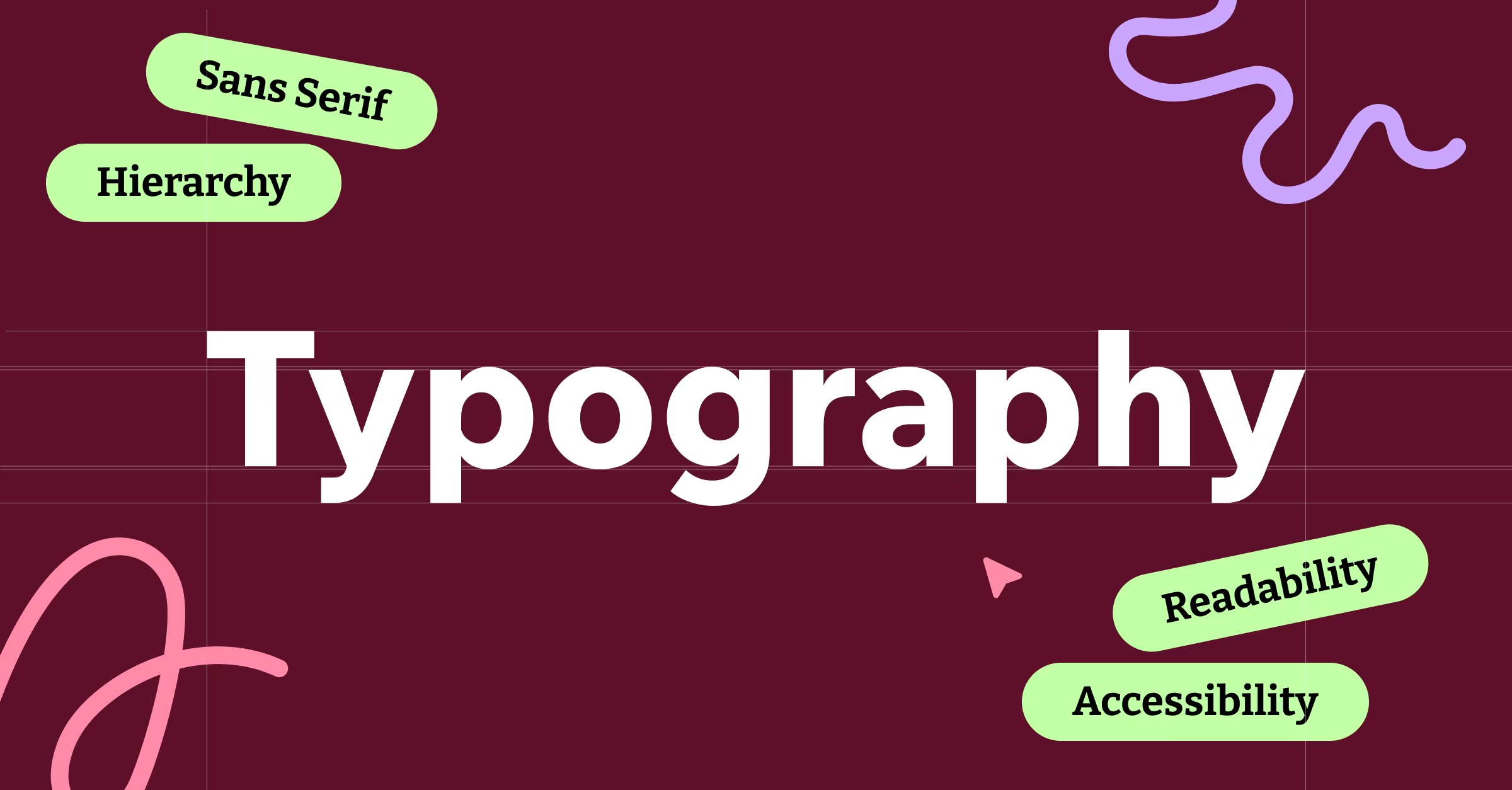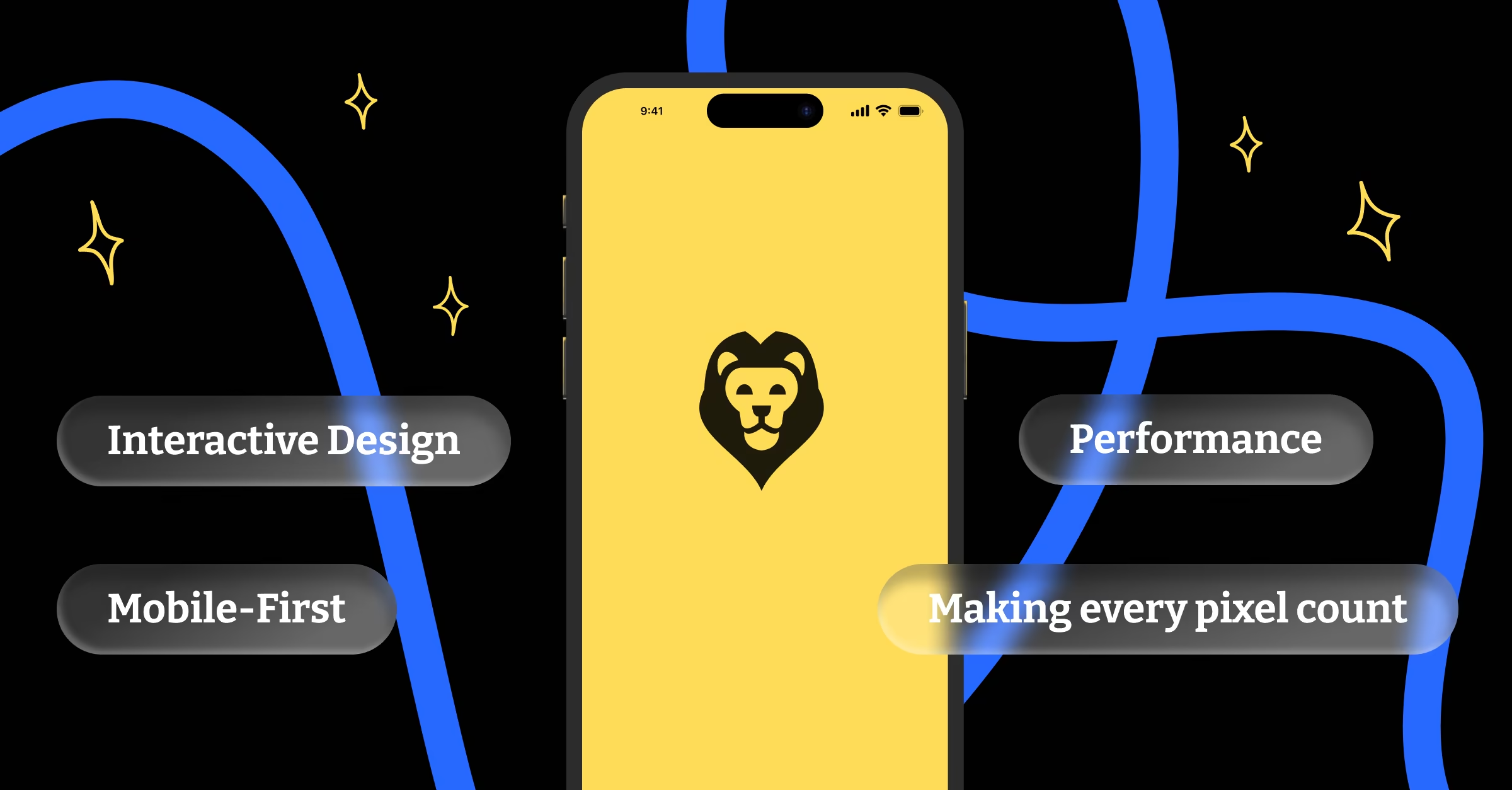Here’s what nobody tells you about learning design: everyone’s path looks different, but everyone makes the same early mistakes. I’ve seen brilliant engineers struggle with color theory and artistic people get stuck on user research. The key isn’t avoiding mistakes; it’s making them faster and learning from them systematically.
After mentoring dozens of designers and hiring talent at every level for DesignLion, I’ve noticed patterns in what separates designers who thrive from those who plateau early. It’s not natural talent or expensive education. It’s approaching design learning strategically and building the right foundation from day one.
The Essential Books: Your Design Library Foundation
Let’s start with books because, despite living in the age of YouTube tutorials, deep design thinking still happens best in long-form content. These aren’t just books to read; they’re references to return to throughout your career.
“The Design of Everyday Things” by Don Norman remains the essential starting point. Norman teaches you to see design everywhere and understand why some things work intuitively while others frustrate users. This book trains your design eye before you learn any software. You’ll never look at door handles, faucets, or phone interfaces the same way.
“Don’t Make Me Think” by Steve Krug covers web usability with humor and practical examples. Krug’s principles apply beyond websites to any interface design. The book is short, readable, and immediately applicable to real projects.
“Atomic Design” by Brad Frost revolutionizes how you think about design systems and component-based design. This becomes crucial as you work on larger projects with multiple team members. Understanding atomic design principles early prevents countless headaches later.
“Universal Principles of Design” by William Lidwell serves as a comprehensive reference for design principles. It’s dense but organized perfectly for looking up specific concepts as you encounter them in real work.
“The Visual Display of Quantitative Information” by Edward Tufte transforms how you approach data visualization and information design. Even if you never design charts, Tufte’s principles about clarity and honesty in visual communication apply to all design work.
For business context, “The Lean Startup” by Eric Ries helps you understand how design fits into broader product development. Designers who understand business constraints and metrics make better design decisions.
Online Courses: Structured Learning That Actually Works
Online courses work best when they combine theory with hands-on projects. Look for courses that make you build real things, not just watch videos.
Coursera’s “UI/UX Design Specialization” by CalArts provides comprehensive coverage of design process from research through implementation. The course structure forces you to complete projects, and peer feedback simulates real-world collaboration.
Interaction Design Foundation (IDF) offers university-level design education at affordable prices. Their courses on user experience design, visual design, and design thinking are research-based and thorough. The community aspects help you connect with other learning designers.
Domestika excels at creative skills courses. Their typography, color theory, and visual identity courses are taught by working professionals and include detailed project work.
LinkedIn Learning (formerly Lynda) covers software skills comprehensively. Their Figma, Adobe Creative Suite, and Sketch courses get you productive with tools quickly.
Google’s UX Design Certificate through Coursera provides job-relevant skills and portfolio projects. It’s particularly valuable if you’re transitioning from another field because it covers the complete UX process.
For more advanced learning, Masterclass offers courses from legendary designers like Paula Scher and David Carson. These are inspirational and provide insight into professional design thinking, though they’re less practical for beginners.
Podcasts: Learning During Your Commute
Design podcasts let you absorb industry knowledge during dead time. The best podcasts combine practical advice with inspiring stories from working designers.
“Design Better” by InVision features conversations with design leaders about process, career development, and industry trends. Episodes are well-produced and consistently valuable.
“User Defenders” focuses on UX design with interviews covering real project challenges. Host Jason Ogle asks practical questions that reveal how experienced designers actually work.
“What is Wrong with UX” offers critical perspectives on common UX practices. Hosts Kate Rutter and Laura Klein challenge conventional wisdom and provide refreshing honesty about what actually works in design.
“The Honest Designers Show” covers freelance design business topics alongside design process discussions. Particularly valuable if you’re interested in client work or starting a design business.
“Layout” by Rafael Conde and Kevin Clark focuses on design details and craftsmanship. Short episodes perfect for learning about typography, spacing, and visual refinement.
For inspiration, “The Accidental Creative” by Todd Henry isn’t design-specific but covers creative process, productivity, and maintaining creative output over time.
YouTube Channels: Visual Learning at Its Best
YouTube excels at demonstrating design process and software techniques. The best channels show real work being created, not just finished results.
“The Futur” with Chris Do covers design business, client relations, and strategic thinking. Do’s approach to design as business problem-solving transforms how you think about client work.
“CharliMarieTV” follows a working designer’s projects and process. Charlie’s videos show the messy reality of design work, including client feedback, revisions, and project challenges.
“Mike Locke” creates detailed tutorials on design systems, component libraries, and advanced Figma techniques. Technical depth perfect for intermediate to advanced learning.
“AJ&Smart” focuses on design sprints, workshops, and collaborative design process. Their content helps you facilitate design work with teams and stakeholders.
“Flux” by Ran Segall covers UI/UX design with practical tutorials and portfolio reviews. Segall’s feedback on student work provides insight into professional design evaluation.
For software-specific learning, “Figma” official channel provides comprehensive tutorials and feature updates straight from the source.
Blogs and Publications: Staying Current
Design blogs help you stay current with industry trends and learn from working professionals sharing their experiences.
“A List Apart” publishes thoughtful articles about web design, user experience, and content strategy. Articles are thoroughly researched and provide depth beyond typical blog posts.
“Smashing Magazine” covers practical design and development topics with detailed tutorials and case studies. Their articles often include downloadable resources and code examples.
“UX Planet” on Medium aggregates UX articles from practitioners worldwide. Quality varies, but you’ll find diverse perspectives and current industry discussions.
“Google Design” showcases Google’s design work and publishes articles about material design, design systems, and large-scale design challenges.
“Airbnb Design” provides case studies of real design problems and solutions from Airbnb’s team. Their articles demonstrate professional design process at scale.
“InVision’s Design Blog” features guest posts from design leaders and covers industry trends, tools, and career development.
For daily inspiration, “Dribbble” and “Behance” showcase current design work, though focus on finished products rather than process.
Communities: Learning Through Connection
Design communities provide feedback, mentorship, and career opportunities that solo learning can’t match.
“Designer Hangout” Slack community includes thousands of working designers sharing advice, job opportunities, and project feedback. Active discussions about real design challenges.
“Mixed Methods” focuses on UX research and combines online community with local meetups. Particularly valuable for learning research methods and connecting with researchers.
“Women in UX” provides community and career support specifically for women in design. Regular events, mentorship programs, and job board.
“Designer News” functions like Reddit for designers, with discussions about tools, trends, and industry news. Good for staying current with design discourse.
Local “IXDA” (Interaction Design Association) chapters host events and workshops in major cities. In-person networking and learning opportunities.
“Dribbble Meetups” happen globally and provide opportunities to meet local design community members and see work presentations.
Building Your Learning Strategy
Random learning leads to random results. Successful design learning requires strategy and consistency.
Start with fundamentals before tools. Understanding typography, color theory, and composition principles will serve you regardless of software changes. Tools become obsolete; principles endure.
Focus on one area at a time. Trying to learn visual design, user research, and prototyping simultaneously leads to surface-level knowledge in everything. Go deep before going broad.
Build projects throughout your learning. Reading about design without creating builds false confidence. Start with simple projects: redesign an existing app screen, create a poster series, design a simple website. Complex projects come later.
Seek feedback early and often. Join communities, find mentors, and share work regularly. Outside perspective identifies blind spots that self-evaluation misses.
Study work you admire, but don’t just appreciate it. Reverse-engineer designs to understand how they work. What typography choices create hierarchy? How does color direct attention? Why does the layout feel balanced?
Creating Your First Portfolio
Your portfolio demonstrates thinking process, not just visual output. Include project context, problems solved, and design decisions explained.
Show work process, not just final designs. Include research, sketches, iterations, and reasoning behind final solutions. Employers want to understand how you think, not just what you can produce.
Quality beats quantity always. Three excellent projects that demonstrate different skills serve you better than ten mediocre pieces. Each project should highlight specific competencies: user research, visual design, interaction design, or design systems.
Case study structure matters. Start with problem definition, show your process, explain key decisions, and present final solutions with results when possible. Make it easy for viewers to understand your contribution to each project.
The Long Game
Design mastery takes years, not months. The designers who succeed long-term approach learning as a career-long practice, not a one-time education.
Stay curious about adjacent fields. Understanding psychology improves user research. Business knowledge makes you a more strategic designer. Technology awareness helps you design feasible solutions.
Build learning habits that survive career demands. When client work consumes your schedule, passive learning through podcasts and blogs keeps you current. Active learning through courses and projects happens during slower periods.
Find your design voice gradually. Early career focuses on learning conventions and building skills. Design personality emerges through experience and reflection on what kinds of problems energize you.
Getting Your First Design Job
The transition from learning to working as a designer requires strategic portfolio development and realistic expectations about entry-level roles.
Consider internships or junior positions that provide mentorship over higher-paying roles without growth opportunities. Learning from experienced designers accelerates your development more than struggling alone.
Contribute to open source projects or volunteer for nonprofits to build real-world experience and portfolio pieces. These projects often provide creative freedom that client work doesn’t allow.
Network within the design community through events, online groups, and social media. Many design jobs come through referrals rather than job boards.
Practice interviewing by participating in portfolio review sessions and design critiques. The ability to articulate design decisions clearly matters as much as the quality of your work.
Remember that your first design job is the beginning of your education, not the end. The real learning happens when you’re solving actual business problems with real constraints and stakeholders. Everything before that is preparation.
Design is a field where continuous learning isn’t optional; it’s essential. Technologies change, user expectations evolve, and business needs shift constantly. The designers who thrive are those who stay curious, keep learning, and adapt their skills to new challenges.
Start with this roadmap, but don’t follow it rigidly. Your path through design will be unique based on your interests, opportunities, and the problems you’re passionate about solving. The goal isn’t to check every box; it’s to build the foundation that will support whatever direction your design career takes you.



